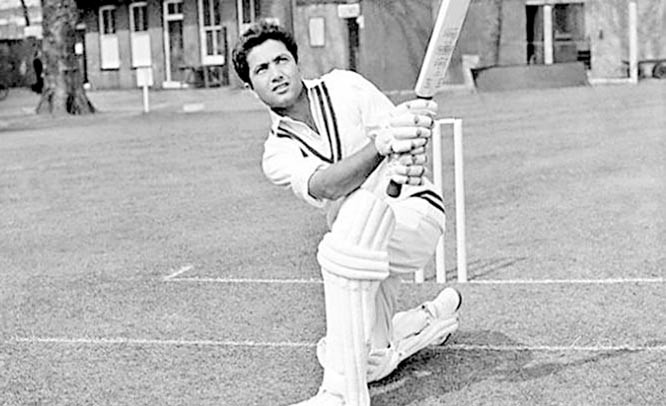
Hanif Mohammad, the original holder of the title "The Little Master", remains the only cricketer ever to stamp his mark on centre stage for three continuous days of a Test match. Those were the days when there were neither neutral umpires nor the Decision Reviews.

Hanif Mohammad’s career was replete with records that provided fodder for the statisticians of the time and kept them busy.
The adage that records are created only to be broken holds true in cricket as well - the outstanding exception being Don Bradman whose staggering Test average of 99.9 not only remains unsurpassed in 70 years but remains far ahead of the distant second at 60.7 of Herbert Sutcliffe (including only such players as have played at least 25 Tests). This huge difference between the top first and second is a phenomenon that remains unexplained, with no parallel.
Apart from numerous national records, the legendary Hanif also created several world records in his career most of which are common knowledge. Not many, however, would know that he continues to hold for the last 60 years the world record of scoring the highest number of runs in a Test innings in an ‘away’ Test match.
In the entire history of the game, from 1877 to date, there have been only 11 Test innings when a triple century was scored away from home. They are listed in the descending order of number of runs scored:
In keeping with his stature as the greatest of the great, Sir Don Bradman scored both his triple hundreds in Test cricket away from the friendliness of home, against England, the toughest opposition of his time.
All these batsmen in the list, barring Hanif, scored their runs in the first innings when one bats with relative freedom, unburdened with pressures that build up in the course of the match.
Hanif, who tops this list of distinguished batsmen, performed his feat in the second innings in the most trying circumstances against a formidable West Indies side that included such big names as Sobers, Weeks, Walcott, Kanhai and Hunte. Their bowling line up was made up of the grisly Gilchrist, the supreme Sobers, the wily Valentine, the astute Atkinson and the skilled Smith.
Pakistan were playing only their fourth Test series.
When Hanif walked in to open Pakistan’s second innings, his side was facing a frightful deficit of 473 runs. Time, the last ally in such situations, too, had joined hands with the enemy as the West Indies had over three days to make a killing. Against these overwhelming odds, the morale was woefully low and the specter of defeat loomed large.
Undaunted, the valiant Hanif steeled himself, rallied his wits and, with a combination of skill and stamina, courage and concentration the like of which the cricketing world has rarely witnessed, produced that record-breaking, match-saving, monumental innings of 337 in 970 minutes spanning over three days in a total of 657-8 declared.
This total of 657-8 was a world record for the highest second innings score by any team following on. His stay at the wicket -- the longest ever in the game’s history -- was calculated to save the match.
Hanif Mohammad, the original holder of the title "The Little Master", remains the only cricketer ever to stamp his mark on centre stage for three continuous days of a Test match. Those were the days when there were neither neutral umpires nor the Decision Reviews.
There was no respite for Hanif, not even from the forces of nature as the sun beat down relentlessly, hour after hour, day after day.
To add to the ordeal, he had to contend with one additional day as it was a six- day Test match. Thus did the elements and circumstances contrive to set the stage for the longest and most consummate innings in a Test match.
Amazingly, Hanif’s one single innings embraced within itself several Individual and Team records in Test cricket:
Longest innings by an individual in Test cricket;
Highest individual score in an innings in an away Test;
The only batsman to score a triple century in a side’s second innings in an away Test;
And the first batsman to score a triple century in a side’s second innings in Test cricket.
His innings also helped create world team records for Pakistan in Test cricket:
Highest second innings total by a team, following on;
And the highest difference of 551 runs between a team’s first and second innings.
Not only did the incredible Hanif survive at the crease for over 16 hours without a helmet or other protective gear but he also accumulated his runs with mastery over both spin and pace. Such was his judgment in the mind and dexterity with the limbs that he reached a level during this innings when he rendered the good length spot unavailable to all bowlers just as he directed the ball in all conceivable directions where his genius willed.
The Little Master’s innings was as rich qualitatively as quantitatively -- a record-shattering feast for the statistician and a quintessential performance for the connoisseur.
It is this backdrop that lends Hanif’s innings a unique dimension.
The author is an ex-cricket commentator who related this to Hanif Mohammad in part in 1990; the whole of it is now produced here.